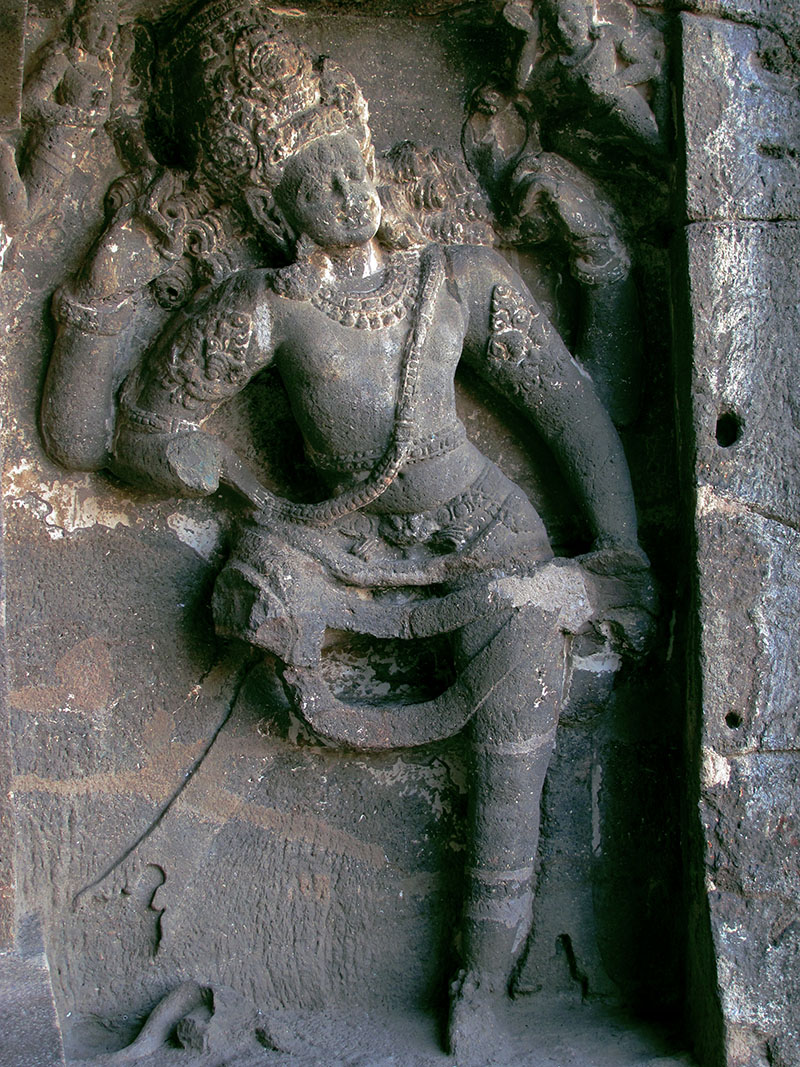ARTICLE
Dashavatara Cave, Ellora
The upper storey incorporates six large relief carvings featuring Vishnu and four featuring his avatars, thus earning the name ‘Dashavatara’ in the centuries after its excavation. The bas-reliefs in the cave also depict deities such as Ganesha, Surya, Shiva, Parvati, and Ardhanarishvara. The sculptures on the north side are mostly Vaishnava, while entirely Shaiva on the south and east. The narratives depicted in these sculptural panels are usually the climax of legends, focusing on heightened action.
The sculptures in the Dashavatara cave usually depict multi-armed deities in dynamic poses, with exaggerated, expressive hands, faces, and feet. The vertical compositional principle favoured in earlier caves at Ellora and at contemporary Deccan temple sites such as Pattadakal is replaced with an emphasis on the diagonal. This can be seen in the Shiva Dancing in Lalita and the Narasimha-Hiranyakashipu panels, where the gods’ bodies and arms are positioned around diagonal axes, imparting a sense of movement and energy to the sculptures. The volume of the sculptures is variable and fluid; some panels are carved within deep cavities, giving a sense of envelopment by negative space and heightening their dramatic impact.
The Dashavatara’s inscription and sculptural features have led some scholars to suggest that it is a crucial landmark in the history of the Ellora cave complex. It continues to remain a major tourist attraction as of writing.
Bibliography
Our website is currently undergoing maintenance and re-design, due to which we have had to take down some of our bibliographies. While these will be re-published shortly, you can request references for specific articles by writing to hellomapacademy@map-india.org.







